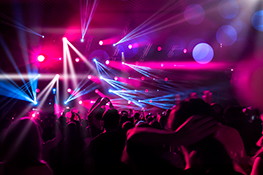Stage Lighting That Wow’s: Creating Unforgettable Moments
The Power of Light in Shaping Narrative
Stage lighting is more than just illumination; it’s a powerful storytelling tool. It sets the mood, guides the audience’s eye, and dramatically enhances the emotional impact of any performance. Mastering stage lighting techniques is crucial for creating truly unforgettable theatrical experiences. This article explores how to leverage lighting design to achieve captivating results, transforming a simple stage into a vibrant and evocative world.
Understanding the Fundamentals of Stage Lighting
Before diving into creative techniques, it’s essential to grasp the fundamentals. This includes understanding different types of stage lights, such as:
- Spotlights: Ideal for highlighting specific actors or objects.
- Floodlights: Used to wash the stage with even light.
- Fresnels: Offer a soft-edged, adjustable beam.
- Ellipsoidals: Provide sharp, controlled beams perfect for gobo projection.
- LED Lighting: Energy-efficient and offering a wide range of color options.
Knowing the capabilities of each type of light is the first step towards effective lighting design. Furthermore, understanding color temperature (measured in Kelvin) and its effect on mood is vital. Cooler temperatures (e.g., 5000K) create a crisp, clean feel, while warmer temperatures (e.g., 2700K) evoke warmth and intimacy.
Beyond Illumination: Creating Atmosphere and Emotion
Effective stage lighting transcends mere illumination; it’s about crafting a specific atmosphere. Consider these elements:
- Color Psychology: Red can signify danger or passion; blue, calmness or sadness; green, envy or nature. Strategic color use can greatly impact the audience’s emotional response.
- Intensity and Contrast: Varying the intensity of light creates dramatic effects. High contrast can highlight key moments, while low contrast can create a more subdued atmosphere.
- Movement and Timing: Precisely timed light cues can emphasize action and build suspense. Moving lights can draw the audience’s attention and add dynamism to the scene.
- Gobo Projection: Using gobos (metal templates) allows for projecting patterns and images onto the stage, adding texture and visual interest.
Practical Tips for Stunning Stage Lighting Designs
For aspiring lighting designers, here are some practical tips:
- Start with a Storyboard: Visualize your lighting plan before implementing it. A storyboard will help you map out lighting cues and transitions.
- Collaborate with the Director: Close collaboration with the director is essential to ensure the lighting effectively supports the narrative and vision of the production.
- Consider the Audience’s Perspective: Think about how the lighting will look from the audience’s point of view. Avoid harsh shadows or glare that might distract viewers.
- Test and Refine: Thorough testing and refinement are crucial. Adjust lighting cues during rehearsals to achieve the desired effect.
Conclusion: Elevating Performances Through Light
Mastering stage lighting is a journey, not a destination. By understanding the fundamental principles, experimenting with different techniques, and collaborating effectively with other members of the production team, you can create unforgettable moments that will leave your audience captivated. Let your imagination soar and transform the stage into a canvas of light, bringing your stories to life in breathtaking ways. Visit stagelights.in to explore our range of high-quality stage lighting equipment and embark on your journey to creating spectacular lighting designs.


 Auditorium Construction Services
Auditorium Construction Services 